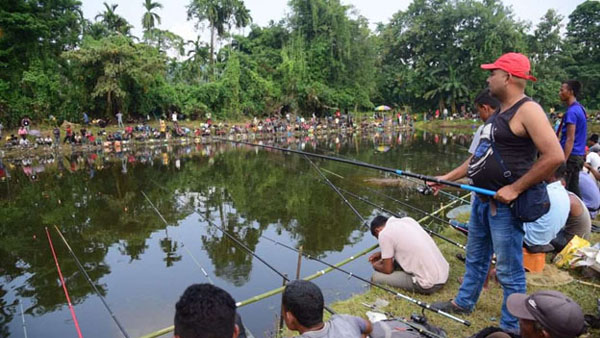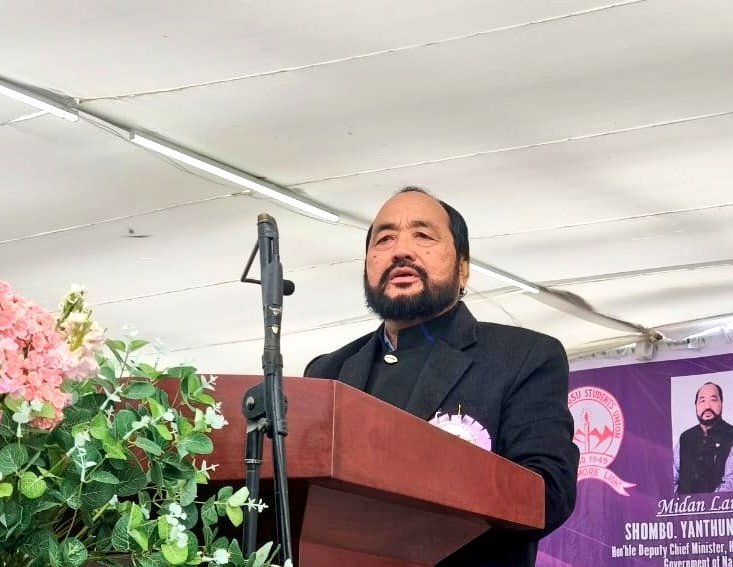Dr. C. Debnath
Bankitkupar Mukhim
Meghalaya, with its pristine rivers, waterfalls, and natural water bodies, has emerged as a promising destination for angling-based tourism. While this niche tourism sector holds significant potential for economic development and recreational opportunities, its current implementation, particularly in pond-based settings, raises serious concerns about sustainability and resource management.
The fundamental challenge in Meghalaya’s angling tourism lies in its misplaced implementation. While the state’s natural water bodies – rivers, streams, and lakes – offer ideal conditions for sustainable angling tourism, there is an increasing trend of conducting these activities in artificial ponds or tanks. This practice contradicts established principles of recreational fishing management and poses several challenges to both the ecosystem and the fishing industry. The shift towards pond-based angling has occurred primarily due to easier accessibility and management of smaller water bodies. However, this approach fundamentally undermines the true potential of angling tourism while creating numerous operational and ecological challenges.
In confined spaces, the frequent disturbance of fish through angling activities creates multiple stress factors that affect the overall well-being of the aquatic population. The repeated casting and retrieval of fishing lines disturb natural feeding patterns, causing fish to alter their behavior and potentially reducing their growth rates. The constant human presence and activity around ponds creates a stressful environment that impacts breeding cycles and natural movements within the water body. Furthermore, the high density of anglers in limited spaces increases the risk of physical injury to fish through improper handling or hook-related trauma.
Perhaps most concerning is the elevated risk of disease transmission in pond environments where angling is practiced regularly. The combination of stressed fish, frequent handling, and the introduction of various fishing equipment creates ideal conditions for the spread of parasites and bacterial infections. Unlike natural water bodies where water flow and spatial distribution help minimize disease transmission, confined pond environments can quickly become hotspots for pathogenic organisms.
The economic implications of pond-based angling tourism are equally troubling. While it provides quick economic returns through entry fees and equipment rentals, it significantly underestimates and underutilizes the true potential of aquaculture resources. The inability to accurately measure fish biomass and growth rates in recreational fishing environments makes it difficult to optimize resource utilization. The focus on recreational value often overshadows the potential for sustainable aquaculture production, leading to suboptimal use of valuable water resources.
The practice poses significant biosecurity risks to aquaculture operations. The constant flow of visitors and their equipment increases the likelihood of introducing pathogens and invasive species to the water body. The difficulty in implementing proper quarantine and disease prevention measures in facilities that require regular public access compromises the overall biosecurity of the farm. The use of various types of fishing equipment, often brought in by visitors from different locations, creates multiple vectors for the introduction of diseases and parasites. Moreover, the regular disturbance of pond sediment through angling activities can release dormant pathogens and create stress-induced disease outbreaks.
To transform angling-based tourism from its current problematic state to a sustainable model, several key changes are necessary. The government should develop and implement clear guidelines that promote angling tourism in natural water bodies while restricting or carefully regulating pond-based activities. Infrastructure development should focus on providing access to rivers and streams rather than creating artificial fishing spots. A comprehensive monitoring system should be established to assess the impact of angling activities on fish populations and ecosystem health.
Investment in proper training for tour operators and guides would ensure that angling activities are conducted with minimal impact on fish health and environmental integrity. The development of designated angling zones in natural water bodies, with appropriate catch-and-release policies, would help maintain sustainable fish populations while providing authentic fishing experiences.
While angling-based tourism holds significant potential for Meghalaya’s economic development, its current implementation in pond environments has created more challenges than benefits. The practice has evolved into a bane rather than the intended boon, primarily due to inappropriate site selection and management approaches. Moving forward, the focus should shift towards developing sustainable angling tourism in natural water bodies, supported by proper regulations and management practices. This transition would not only preserve the ecological integrity of aquaculture resources but also create a more authentic and sustainable tourism product that benefits both the environment and the local economy.
The success of angling tourism in Meghalaya ultimately depends on striking the right balance between recreational value and resource conservation. By addressing the current challenges and implementing appropriate measures, this sector can be transformed into a genuine asset for the state’s tourism portfolio while ensuring the long-term sustainability of its aquatic resources.




